Our recent article, “How to Paddle Safely in the Winter,” is now up on Medium. This four-minute read provides an overview of the knowledge and gear you need. It also offers suggestions on watching the weather, setting up a support system, and managing risk. Click here to read. (A Medium account is not required if you use this link.)
Category: cold water kayaking
Life circumstances and weather conditions came together to allow a February afternoon paddle out of Bucks Harbor in Machiasport (downeast Maine) and toward Jasper Beach.
We had paddled this cliff-lined section of Maine coast a number of times before — and for a number of reasons, it has become a favorite. This short section of the coast offers a picturesque working harbor, views of photogenic Yellow Head, craggy high cliffs, rock gardening opportunities, and the unique volcanic rhyolite stones of Jasper Beach.
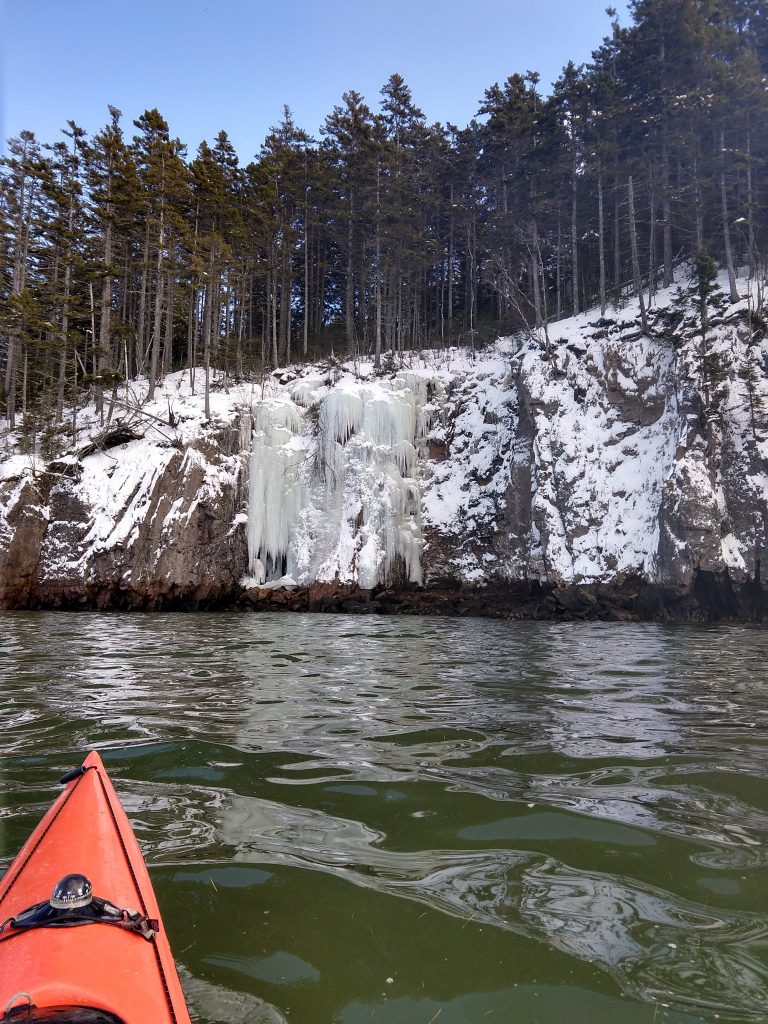
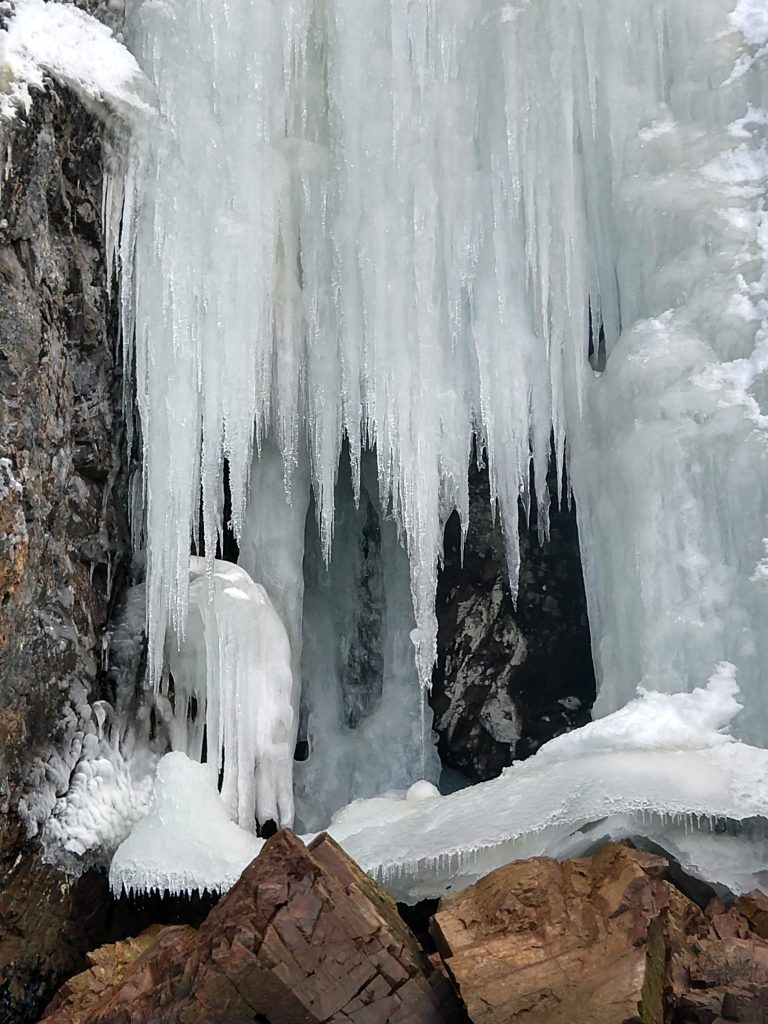
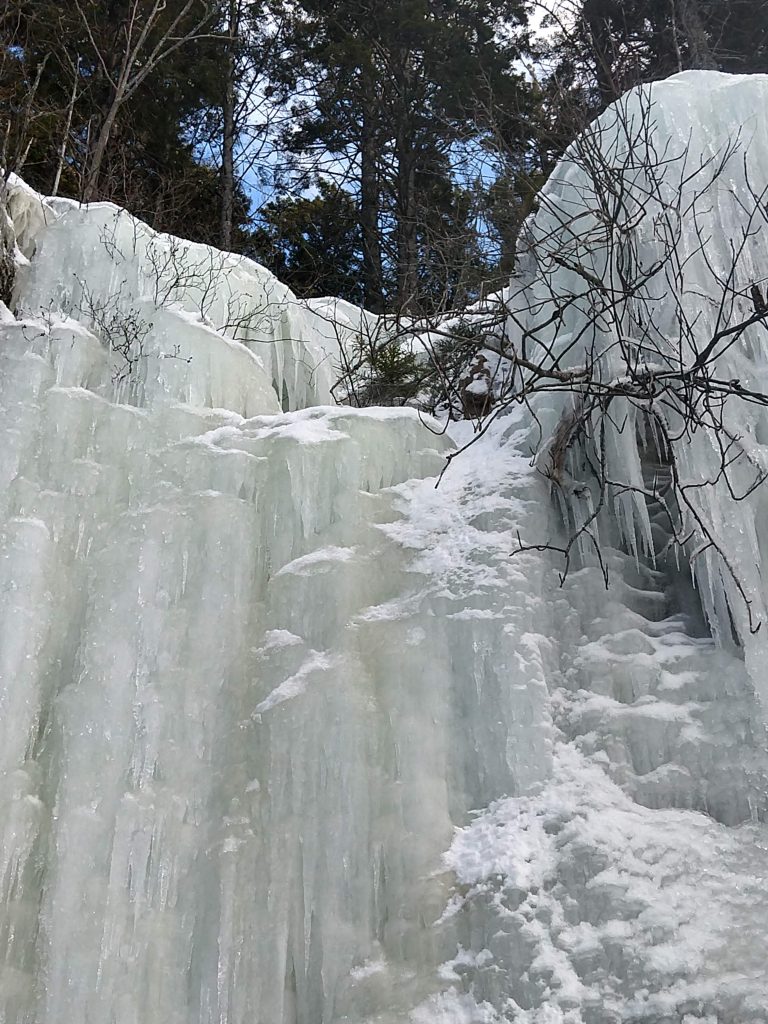
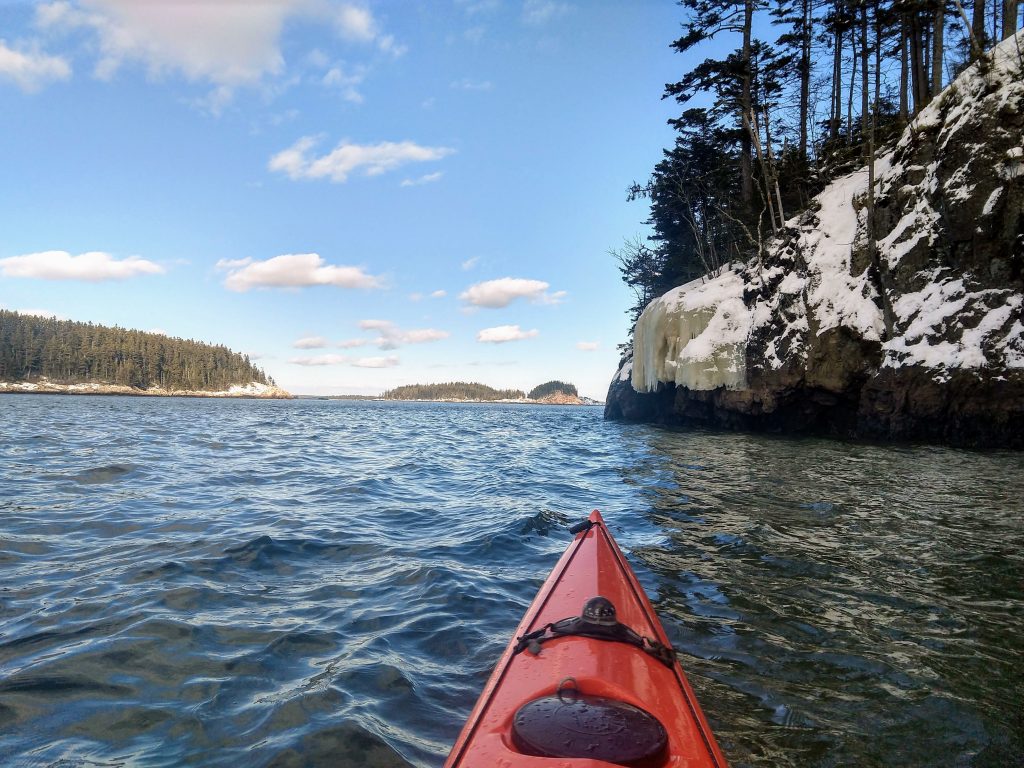
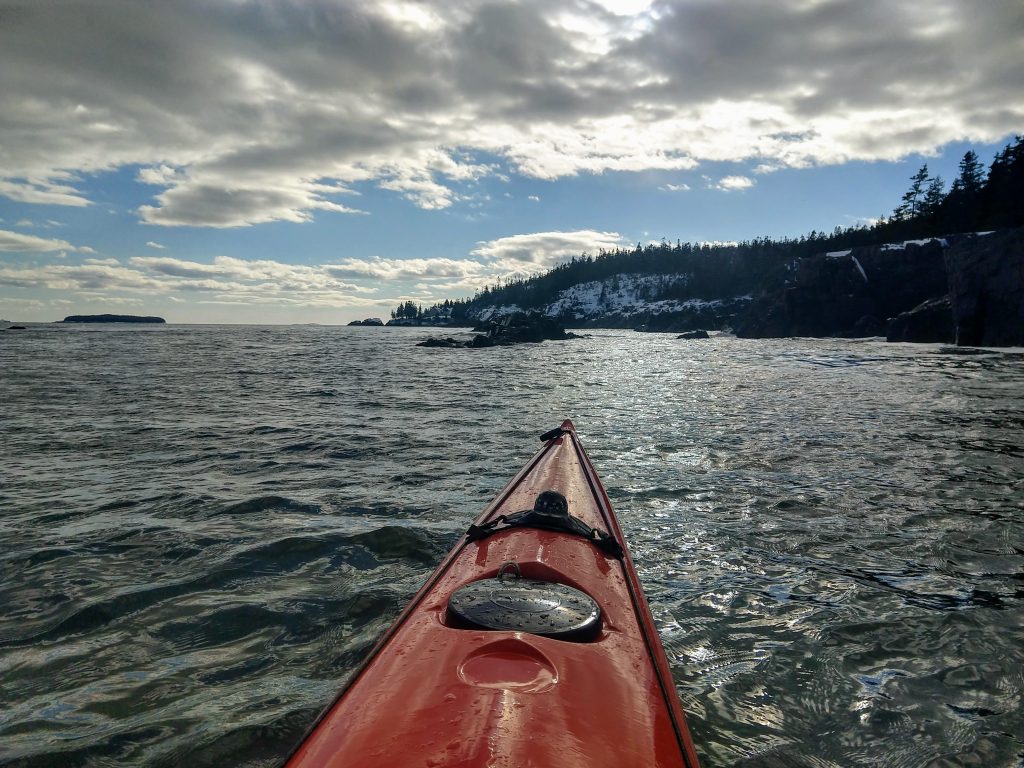
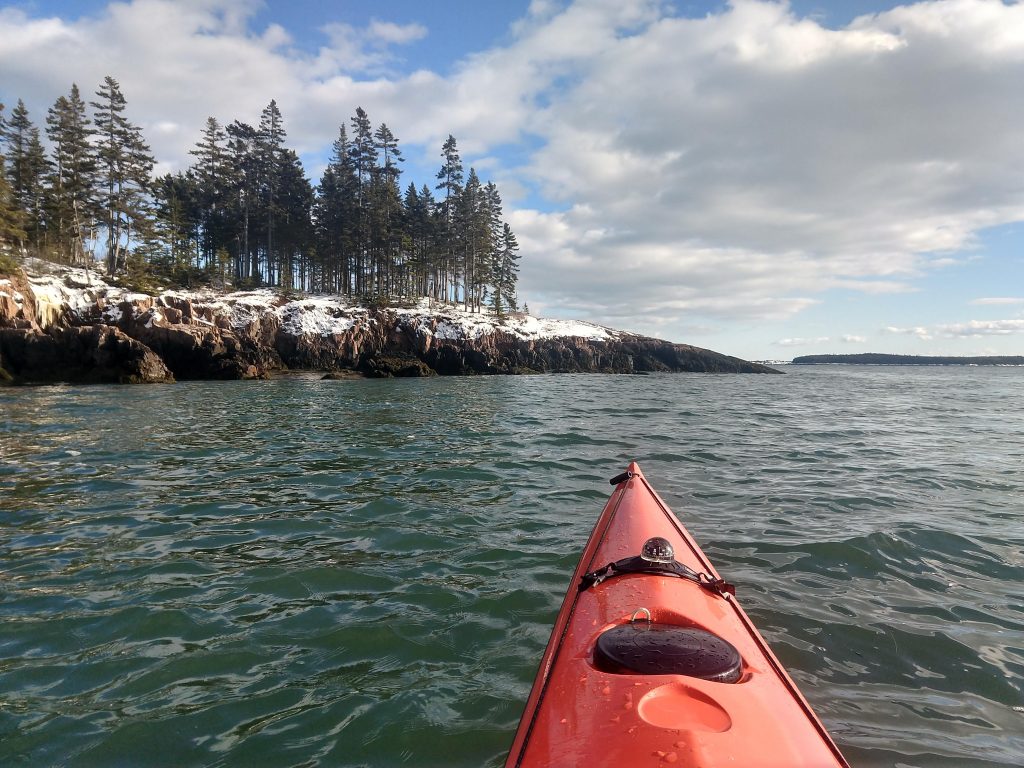
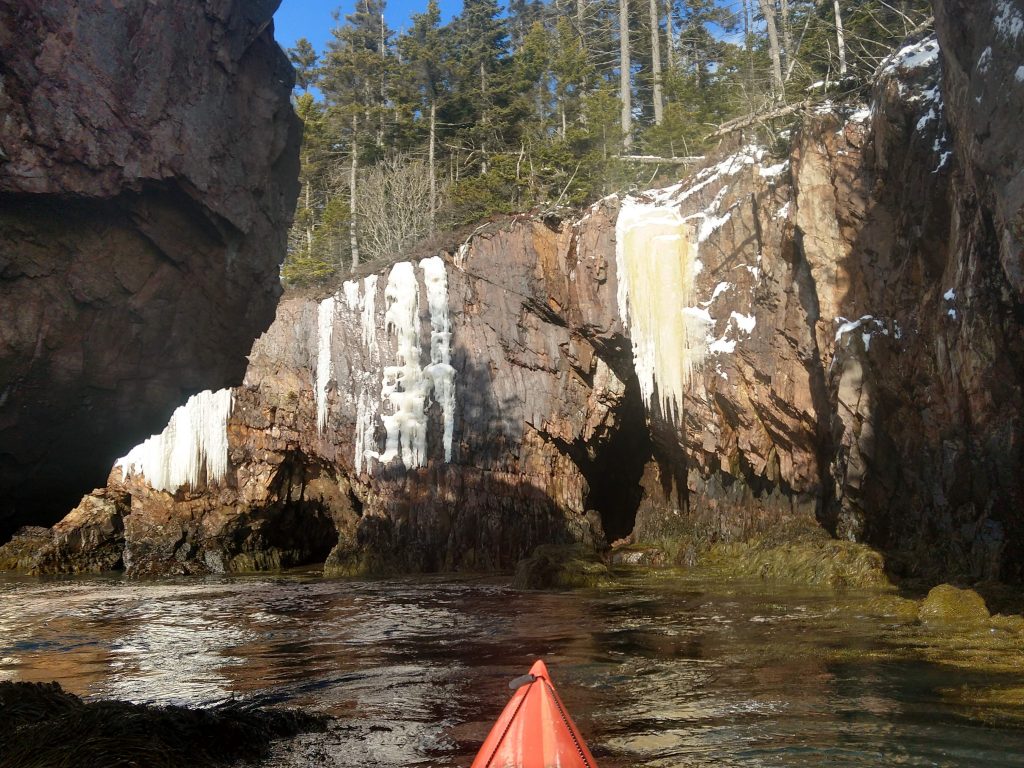
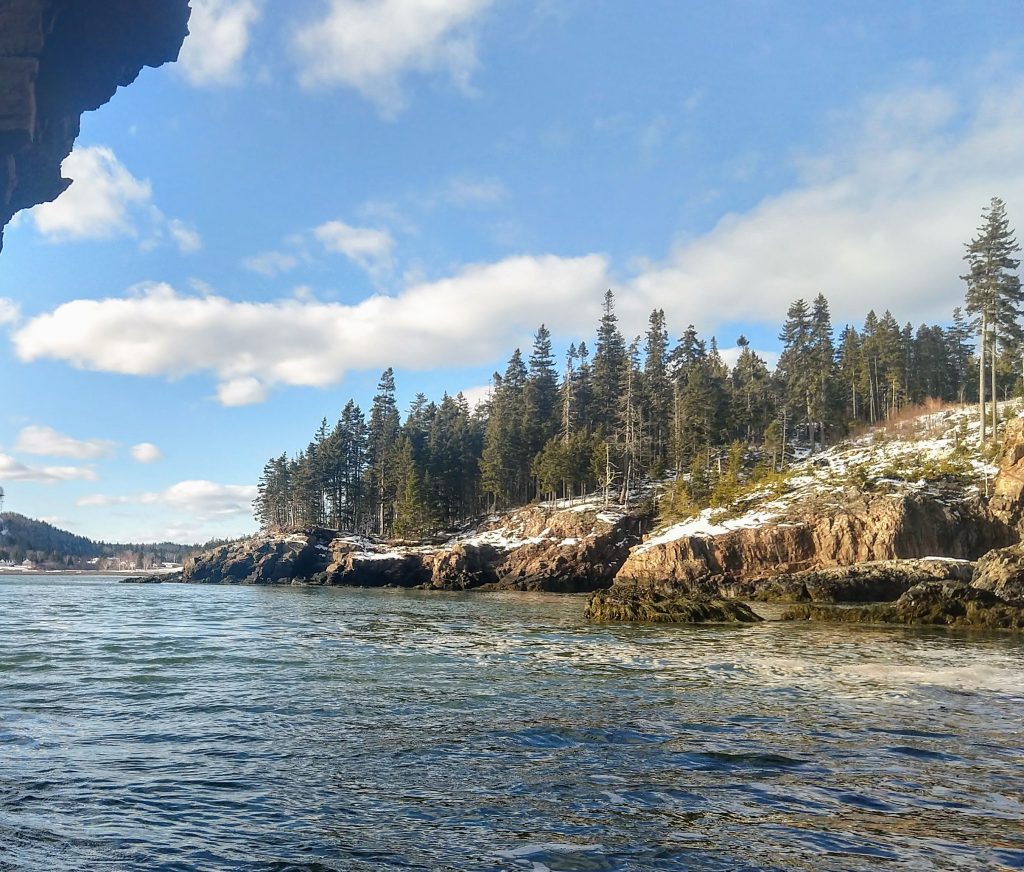
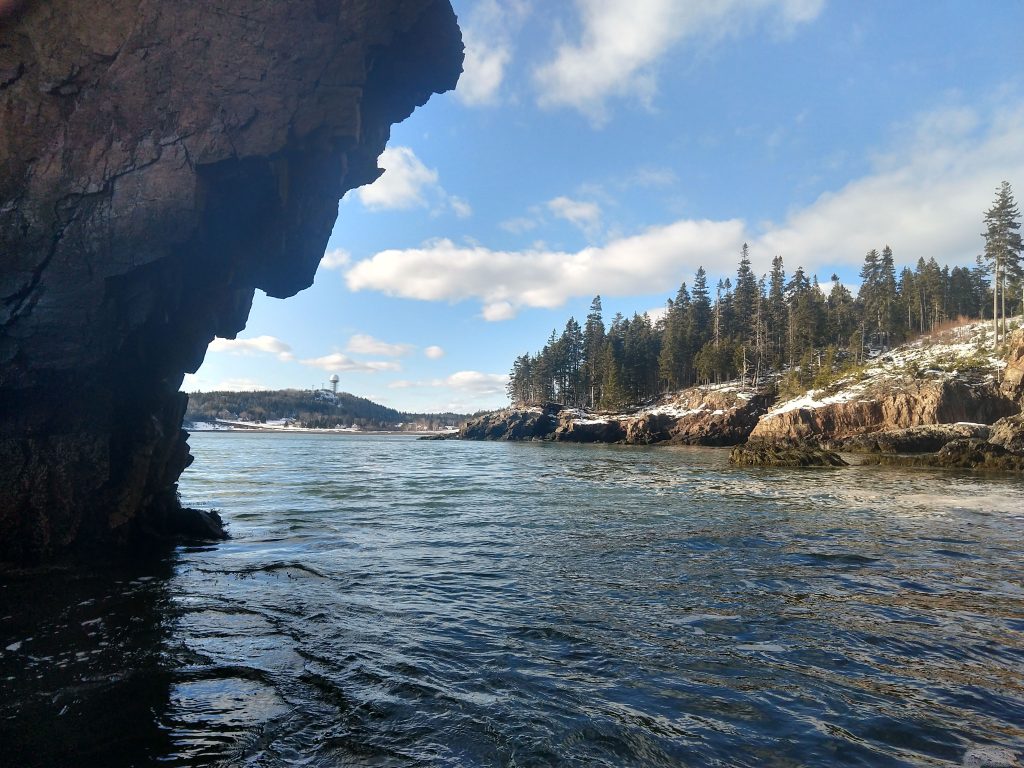
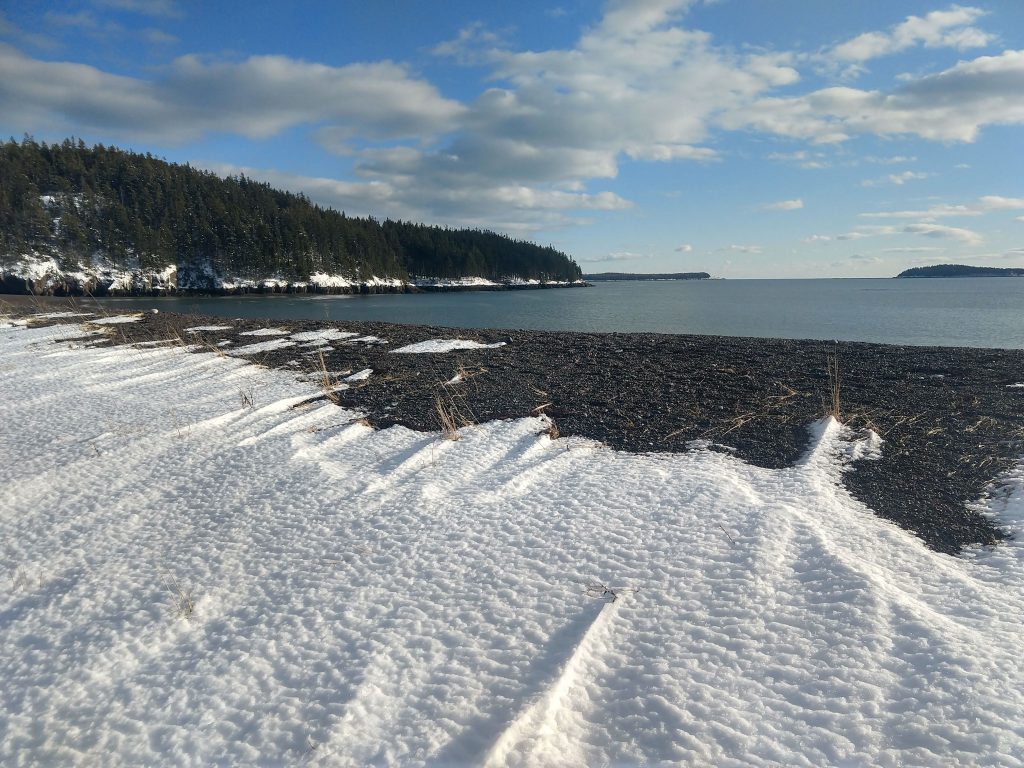
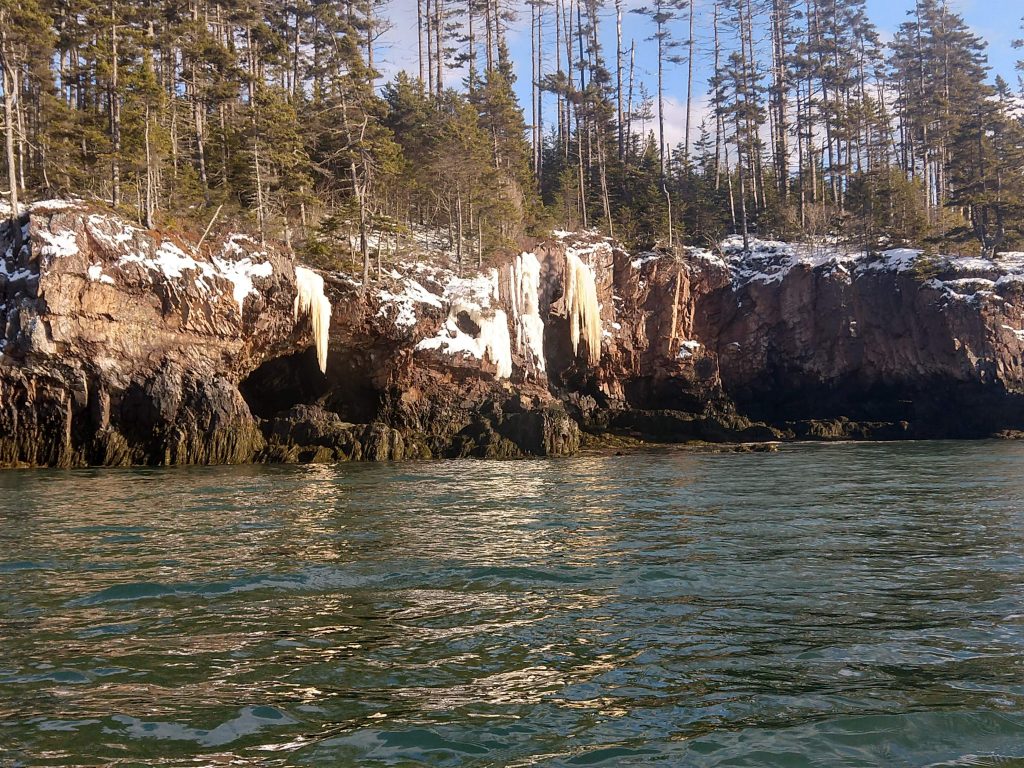
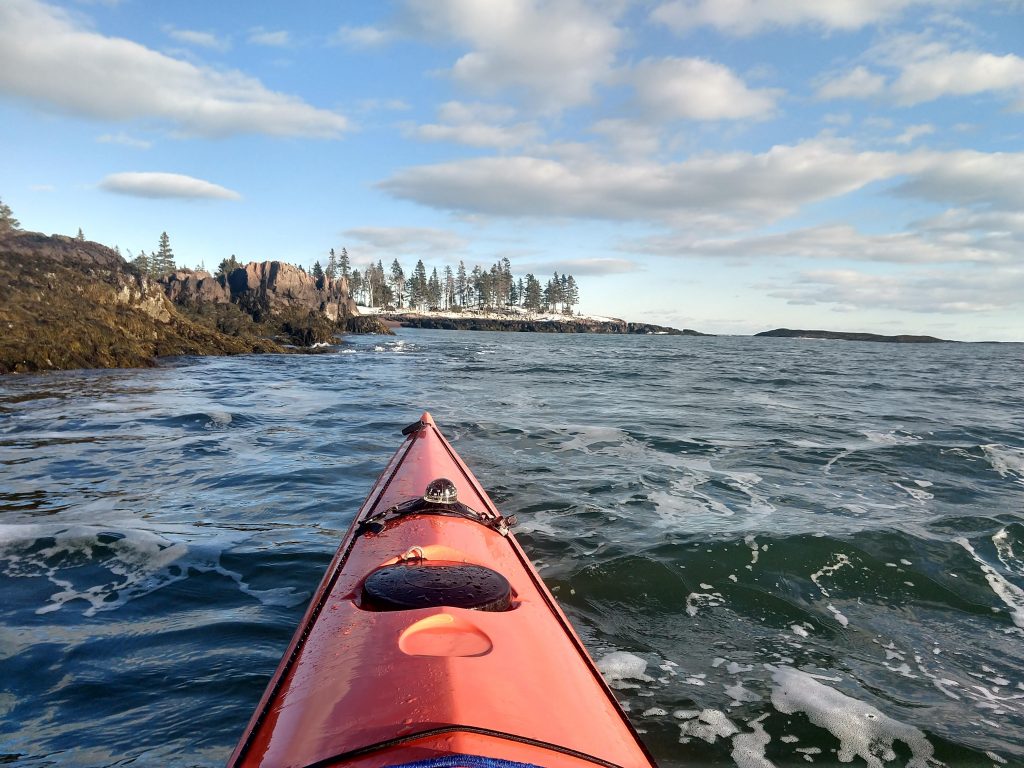
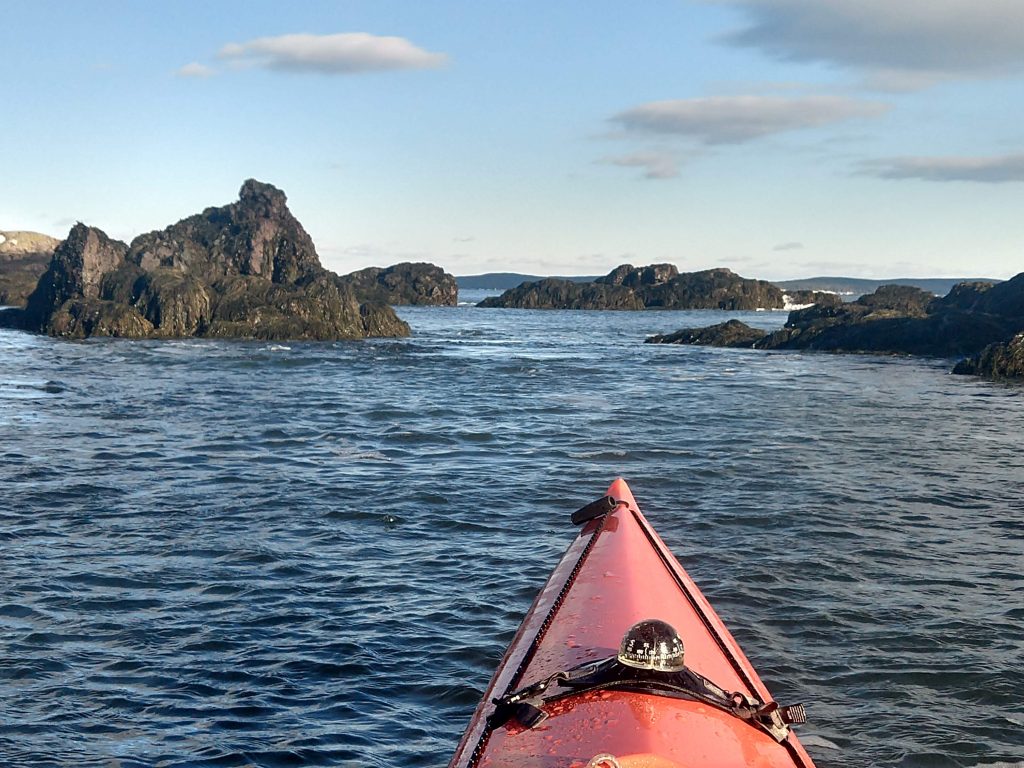
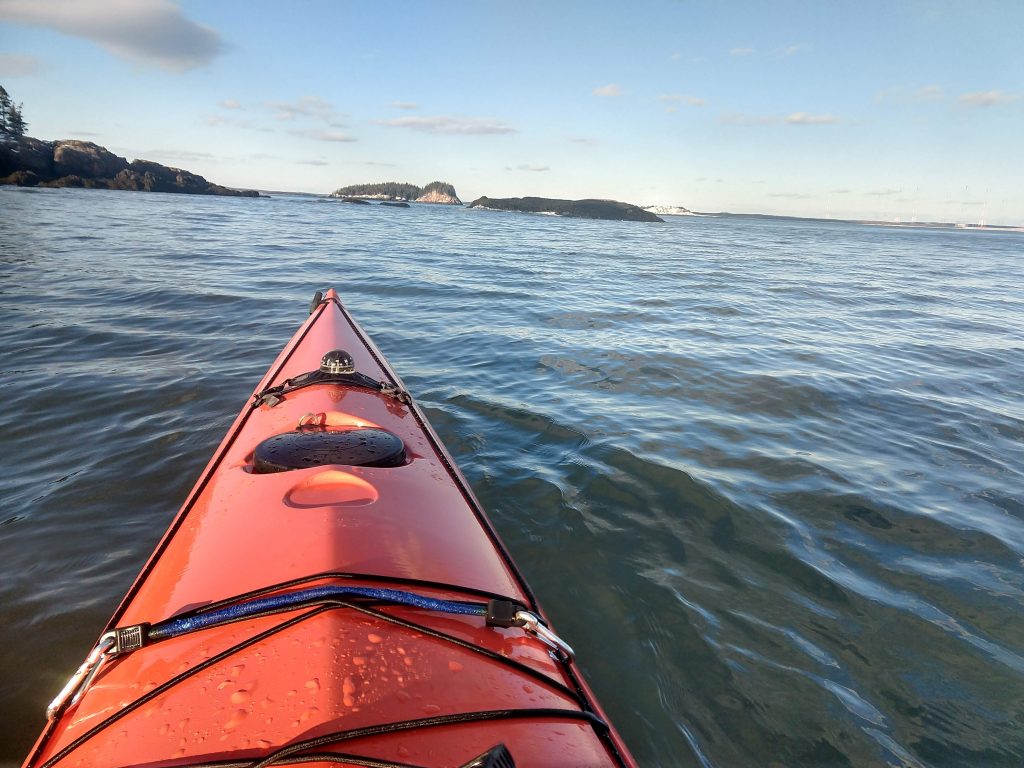
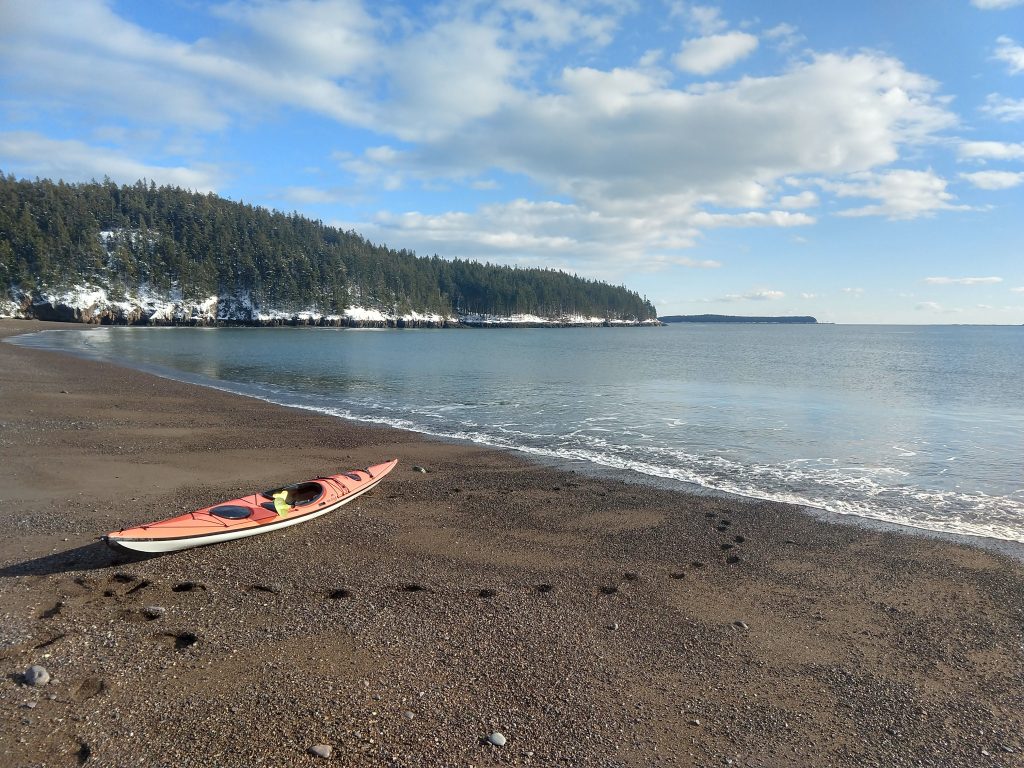
NRS Toaster mitts are not a new product. In fact, they have been around for a long time and are now listed as an NRS closeout, but they are new to me.
I’ve been paddling with Toaster Mitts since November and am thrilled with the level of comfort they bring to my previously wet and cold hands.
Previous to using Toaster Mitts, I was an enthusiastic pogie user. (This is the point in my blog where I may be losing my non-kayaking readers. ‘What’s a pogie?’ They might well ask.) Enthusiastic, yes. After all, pogies are a world above neoprene paddling gloves — both in terms of providing a firm grip on the paddle and maintaining a level of comfort for the hands.
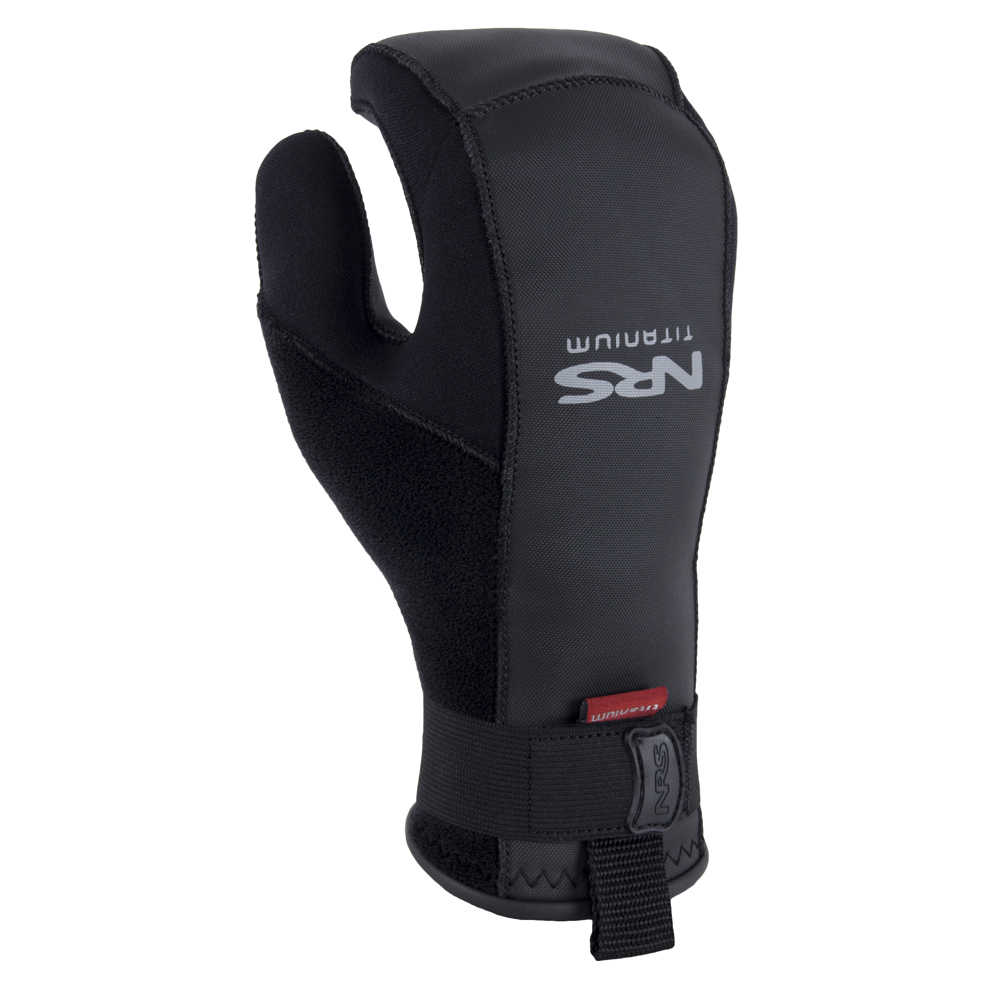 Pogies, as I learned over time, do have a number of shortcomings: (1) once pogies get wet, they are, well, wet — and so are your hands; (2) if you paddle in waves or whitewater, your pogies will get wet; (3) if you paddle with a wing or a Greenland paddle (think no drip rings) your pogies will, see above, get wet; (4) in the event of capsize or when going ashore, once you take your hand off your paddle, your pogies are no longer with you.
Pogies, as I learned over time, do have a number of shortcomings: (1) once pogies get wet, they are, well, wet — and so are your hands; (2) if you paddle in waves or whitewater, your pogies will get wet; (3) if you paddle with a wing or a Greenland paddle (think no drip rings) your pogies will, see above, get wet; (4) in the event of capsize or when going ashore, once you take your hand off your paddle, your pogies are no longer with you.
The NRS Toaster mitt is a fuzzy-lined neoprene mitten shaped to curve around your paddle shaft and fit snugly around your wrist, and with enough texture to provide a good grip on your paddle. The thickness is just right. Thin enough to provide a feel for the paddle shaft. Thick enough to provide warmth. NRS provides a fit chart and guidelines to measuring your hand so the right fit is assured when ordered online. They come on and off more quickly than a pogie as well.
And they stay dry.
I’ve used mine in temps approaching up to 50 degrees and down into the upper 20’s. I expect I’ll be using them for the first races of the
whitewater series this spring.’
The NRS Toaster Mitt is now on sale for $33.75 at NRS. I like them so much I ordered a second pair. Get them before they are gone!
For most people kayaking is a relaxing and relatively safe sport. However, as can be seen in several recent news stories, kayaking can also be dangerous — and even deadly. One of these news stories recounts a January 9th kayaking accident on Canyon Lake in which two brothers, aged 17 and 25 died. The cause of the deaths is still being investigated. What is known is that the brothers set off from shore at noon and at some point became separated from their kayaks. A a helicopter, boat, and shoreline search commenced when they were reported missing later that afternoon. Their kayaks were found on Saturday evening. However, their bodies were not found until the following morning.

According to Weather Underground, wind speeds near Canyon Lake, which were about 14 mph at 3pm, spiked to 29 mph at 4pm on that afternoon. Although little has yet been reported about the cause of this accident, it is very likely that the two paddlers were unable to make progress and then ultimately capsized when the wind speeds picked up.
One article on the accident reports that the water temperature of the lake was 55 degrees. According to United States Search and Rescue Task Force, most victims will be exhausted or unconscious in less than 2 hours in water of this temperature. Expected survival time is 1 – 6 hours. For victims not wearing life jackets, exhaustion would come more quickly and drowning would occur immediately after the victim becomes unconscious.
People often underestimate the danger of cold water, mistakenly thinking that swimming in 55 degree water might be the same as walking around in 55 degree air. However, as USSRTF points out, “Cold water robs the body’s heat 32 times faster than cold air.” So while an inactive person without extra clothing might start to shiver after an hour or more in 55 degree air, the same person will start to shiver within 2 minutes in 55 degree water.
What can kayakers learn from this tragedy? Wear your life jacket. Be aware of the danger of paddling in water below 60 degrees. Know your limits. Listen to weather forecasts before you go out. Be safe out there!
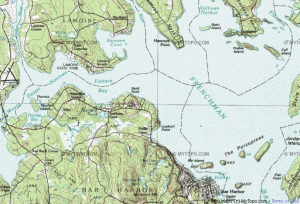
The purpose of this blog post is not to judge the decisions made by this kayaker or to determine exactly what happened but rather to learn from the incident so that other kayakers can avoid this type of accident in the future.
Sunday, June 19 dawned brilliantly sunny and clear. Visibility was a near perfect 10 miles. The 7:00 a.m. air temperature was listed at 59 degrees. The surface water temperature in Frenchman Bay was 58 degrees.
The young man involved in the incident, Eric Hogan, 28, of Webster, Massachusetts, left the shore of Hancock Point in a sit-on-top kayak, wearing only shorts and a life jacket. The lightness of his attire together with the reported fact that he and his wife were planning to leave their vacation cottage that day, seem to indicate that he only planned a short trip. The perfect visibility must have made the mountains of Acadia appear almost close enough to touch.
Waking up in Belfast that morning, I noted the stiff wind blowing and immediately decided that, for me, it was likely not a paddling day. However, weather records in the Bar Harbor area indicate winds of less than 10 mph at 7:00 a.m. The wind direction was from the WNW, which means if he launched from the east side of Hancock Point, he would have been in the lee of the wind and might not have felt it until he had paddled away from the shore. Even if he launched from the southern end of Hancock Point, he may not have been fully aware of the sea conditions, since — when looking out over the water — it is easy to underestimate waves that are not breaking straight onto the shore.
Low tide on Sunday morning was at 8:08 a.m. The tide is listed as 0.5 feet below “normal,” meaning it was a lower than average tide. At 7:00 AM, the tidal currents when move in and out of Frenchman Bay were nearly slack. Although there would be no clouds or rain that day, that early morning stillness was truly “the calm before the storm.”
By 8:15 a.m., the wind was coming out of the northwest. This may have pushed the kayaker further offshore and made it more difficult for him to return. Average wind speed increased to 12 mph, with gusts up to 21 mph. At shortly after 9:15 a.m., wind gusts of up to 25 mph were recorded in Bar Harbor. By this time the tidal currents that push north up the bay and ultimately west through the Mount Desert Narrows would have begun to increase. When tidal currents are in direct opposition to waves, as they were this day, it results in a rough steep-sided seas. By this time, wave heights at the Eastern Maine Shelf Buoy south of Mount Desert Island had increased from 3.0 to 3.8 feet.
Likely sometime between 9:00 and 11:00 a.m., Eric Hogan’s kayak was capsized and he was not able to get back aboard. Perhaps it had already capsized several times. One feature of sit-on-top kayaks is that unlike standard (“sit-in”) kayaks, they do not take and water and cannot swamp. Following a sit-on-top capsize, a paddler need only flip the kayak upright, clamber back aboard, and resume paddling.
The combination of the wind and wind-blow spray as well as the waves sloshing up onto his kayak undoubtedly started to lower Eric’s body temperature. If he had already capsized one or more times, this would have lowered his body temperature further. When the body gets cold, hands and feet start to lose dexterity. Next, arms and legs begin to lose strength. The mind also slows down. Coordination is lost. Judgement becomes clouded.
On one of the capsizes, Eric may not have been separated from his boat or paddle or both. Or, his arms may no longer have had the strength to pull himself back aboard.
At around 11 a.m., after his wife reported him overdue in returning from his outing, police and emergency response personnel began searching for him. Hogan was unresponsive when the Coast Guard found him floating off Hulls Cove around 1:30 p.m.
For the vast majority of people, kayaking is a relatively low risk sport that enhances health and provides a lot of joy. A study of paddlesport deaths in Maine shows that there were 12 kayaking deaths in the years 2000 – 2007, four of which occurred in ocean waters. However, even one death is too many. Following are some guidelines for reducing the incidence of this type of accident in the future.
1. Wear a life jacket, but also understand its limitations. Although the life jacket does not ensure survival, it does extend survival time when swimming in cold water.
2. Choose a kayak appropriate for the waters you are paddling. For paddling in cold waters, kayaks with enclosed cockpits and sealed bulkheads (provide reserve flotation in case of capsize) are recommended.
3. Leave a written float plan indicating where you are going and when you intend to return.
4. Dress for air AND water temperatures. When paddling the Maine coastline, this may mean wearing a wetsuit or dry suit. When it is summer on the land, it is still spring on the water.
5. Listen to weather forecasts. Winds of more than 12 mph may be too much for beginning paddlers. Winds of more than 18 mph may make conditions unsafe for intermediate paddlers.
6. Be prepared for changes in weather. Dramatic and unexpected weather changes will eventually affect all outdoor adventurers.
7. Study charts. Know the areas you will paddle. Understand the effects of tides and currents. Stay along shorelines as much as possible.
8. Carry a waterproof/submersible VHF radio and/or a cell phone in a waterproof pouch.
9. Practice self-rescue and assisted rescue techniques. Take a class to learn these if you have not done so.
10. Paddle in a group when possible as doing so increases your ability to successfully handle an accident or other unexpected situation.
11. If paddling alone, be more conservative in your decisions regarding all of the above
12. If you are unsure about any of the above, strongly consider going with a guide or more experienced paddler.
*Weather and sea condition data are from Gomoos.org and Wunderground.com
While paddling from the Commercial Street Boat Launch to the mouth of Little River the other day, I crossed paths with two other Belfast kayakers who were also out enjoying the brilliant December sunshine. Winter paddling is not for everyone, but IF you have the right equipment, take the right precautions, and maintain a healthy respect for cold water, it can be safe and immensely rewarding.
Skaters and hockey players have begun to venture out onto area lakes and ponds. With the ice-fishing season opening up on January 1st, it seems a good time to review the latest research on the effects of cold water immersion.
The dangers of hypothermia have gotten a lot of press in recent years, and hypothermia is what most people think of first when it comes to cold water immersion. But as the 10-minute Coast Guard video Cold Water Boot Camp shows, hypothermia is only one-third of the challenge of being unexpectedly immersed in cold water.
The first challenge is cold shock (also known as “the gasp reflex”), which lasts for about 1 minute and results in gasping and uncontrolled breathing. Cold shock can severely limit your ability to swim or do anything to rescue yourself. It also can cause you to ingest water into your lungs, especially if you gasp while under the surface or while submerged by a wave.
If you survive the first minute, you will begin to breathe more normally. The second challenge of cold water immersion is cold incapacitation. According to the video, in water temperatures of 45 degrees, you have just 10 minutes of “meaningful movement” before your muscles will be impaired to the point that you may no longer be able to perform simple self-rescue tasks such as swimming, holding onto a rope, hauling yourself up onto the ice, or climbing back into a kayak.
According to the GoMoos site, Penobscot Bay water temperatures are down to 39 degrees. Without doing a lot of complicated math, let’s just say, that doesn’t give you a lot of time.
The third challenge of cold water immersion is loss of functioning due to lowered core body temperature (hypothermia). The video states that in 45 degree water it would only take one hour before you lapse into unconsciousness.
The point the video makes is that due to the effects of cold shock and cold incapacitation, if rescue is not immediately available, you likely would drown before reaching the hypothermia stage — unless you are wearing a life jacket or have some other means of being supported in the water.
If you are paddling, please wear a life jacket and dress for immersion. This means wearing a wet suit or dry suit.
If you are going out on the ice, check the thickness of the ice before doing so. A thickness of 6 inches is suggested for those on foot. Also be aware that ice thicknesses can be highly variable. Going out on the ice with a partner is a good idea. Rope, a whistle, and a cell phone can be useful if a rescue is needed. And if you are at all doubtful about the safety of the ice, it’s not a bad idea to wear a pfd.
Wishing everyone an adventurous and safe 2009!